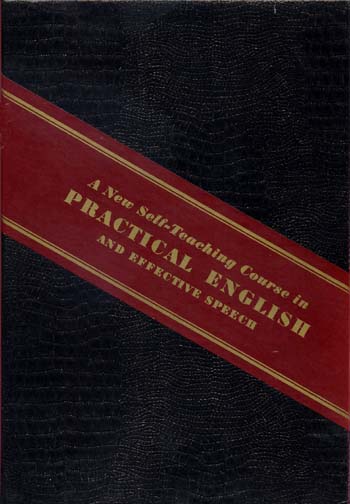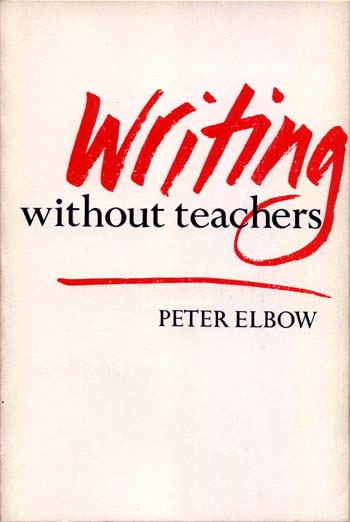|
It
is perhaps fit that in rhetoric and composition, most book-cover illustrations
show nothing but text. This doesn't mean, however, that such covers
are worth only one thousandth's of a picture. Imaged words, as conveyed
by typeface, are images. Graphic features such as font style, font size,
color, and layout carry clear messages.
Consider self-instructional writing textbooks.
These are books aimed for readers who want to learn to speak and write
better, and to do so out of school, on their own. The genre has been
around for at least two centuries. John Rippingham's Rules for English
Composition, and Particularly for Themes; Designed for the Use of Schools,
and in Aid of Self-instruction was published in 1812 (London: Longman,
Green) and went through many editions. On the other side of the Atlantic,
J. H. Hull's Lectures on the Agreement and Government of the English
Language: Designed Expressly for Mutual or Self Instruction was
published in 1836 (Pittsburgh, PA: Johnston and Stockton). Later in
the century, the self-help and progressive movements gave a boost to
such books. Immigrants whose English was shaky and adults who had not
completed formal education turned to texts such as C. C. Shaeffer's
Self-help by Self-work: The Automatic Teacher of English Reading
(Writing) and Spelling (Pitman, 1890), Michael West's Look
and Speak: A Self-teaching Speaking and Writing Introduction to the
New Method Series (Longmans, 1936), and Frederick George French's
Self-help Exercises for Practice in English (Oxford University
Press, 1938). After WWII autotutorial machines gave self-instructional
textbooks another boost, which can still be seen in the book market
(e.g., J. William McVey and Steven J. Willett's Practical English
and the Command of Words . . . Presented in Fifty-Two Self-teaching
Units (English Language Institute of America, 1990) or Patricia
Osborn's How Grammar Works: A Self-teaching Guide (2nd edition,
Wiley, 1999).
How
do the cover illustrations of such books promote their motives? Consider
two quite different examples. Peter Elbow's Writing Without Teachers
needs no introduction, but A New Self-teaching Course in PRACTICAL
ENGLISH and Effective Speech probably does. It was written by Estelle
Bell Hunter and published by the Better-Speech Institute of America
in several editions (1933 to 1944) as a boxed set of fifteen
pamphlets. Illustrated above is the cover to the box. Everything
about the typpography speaks of learnedness and respectability, from
the solemn maroon color to the erudite serif font to the aristocratic
blazon-like slant of the words across the cover. The message to the
user is that this course in rhetoric will confer the same respect as
would a course in the most prestigious institution of learning.
The
text on Elbow's paperback cover (Oxford University Press, 1973) makes
a different point. The salient word, "writing," is handwritten
in a workman-like script, half cursive, half printed. The
scrawl, the red color, and the encircling descender of the "g"
clearly imply a correction on a theme. But it is "teachers"
who are being corrected. The message is that this self-teaching course
in rhetoric will be unlike any institution-sanctioned course, in fact
will be better. This book is not for readers who want something as good
as formal education offers but for readers who may be rebelling against
formal education itself.
I
should add that Estelle Bell Hunter (what a sonorous name!) deserves
some study. She was born in 1885. In the 1920s she published books on
infant mortality and on the organization of public-health nursing agencies,
and then Modern Filing Manual (1923), which remained in print
for two decades. Her last work, published in 1939, has the modest title
of Personality development: A practical self-teaching course, comprising
health, posture, dress, grooming, voice and speech, conversation, social
and business etiquette, self-confidence, poise, living and working with
others, acquiring background, improvement of mind and character, achieving
success and happiness. My thanks to Patty Ericsson, who introduced
me to Estelle Bell Hunter and who provided the photograph of the fifteen
pamphlets; and to Tim McGee, who sent me the photograph of the cover.
RH,
January 2006
|

